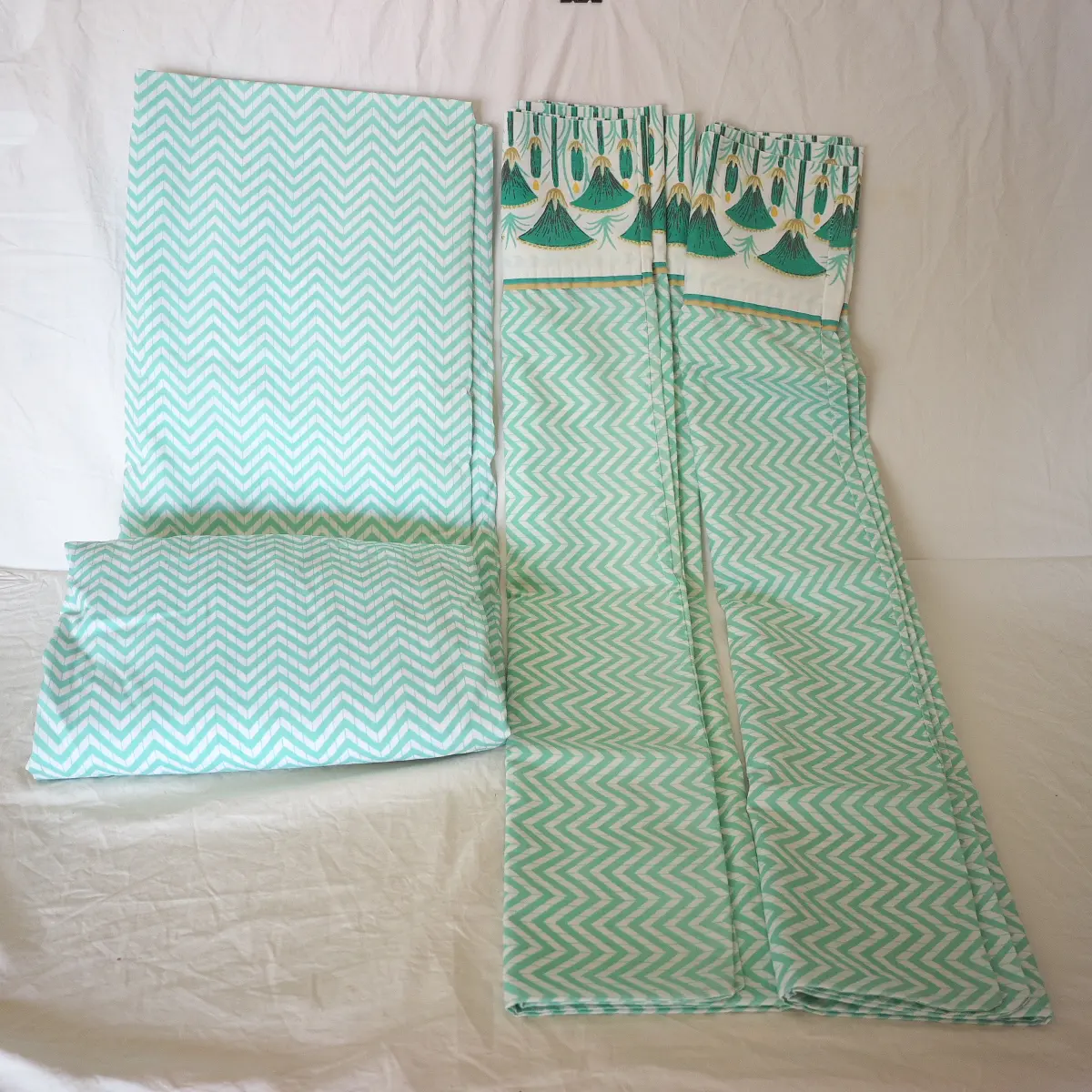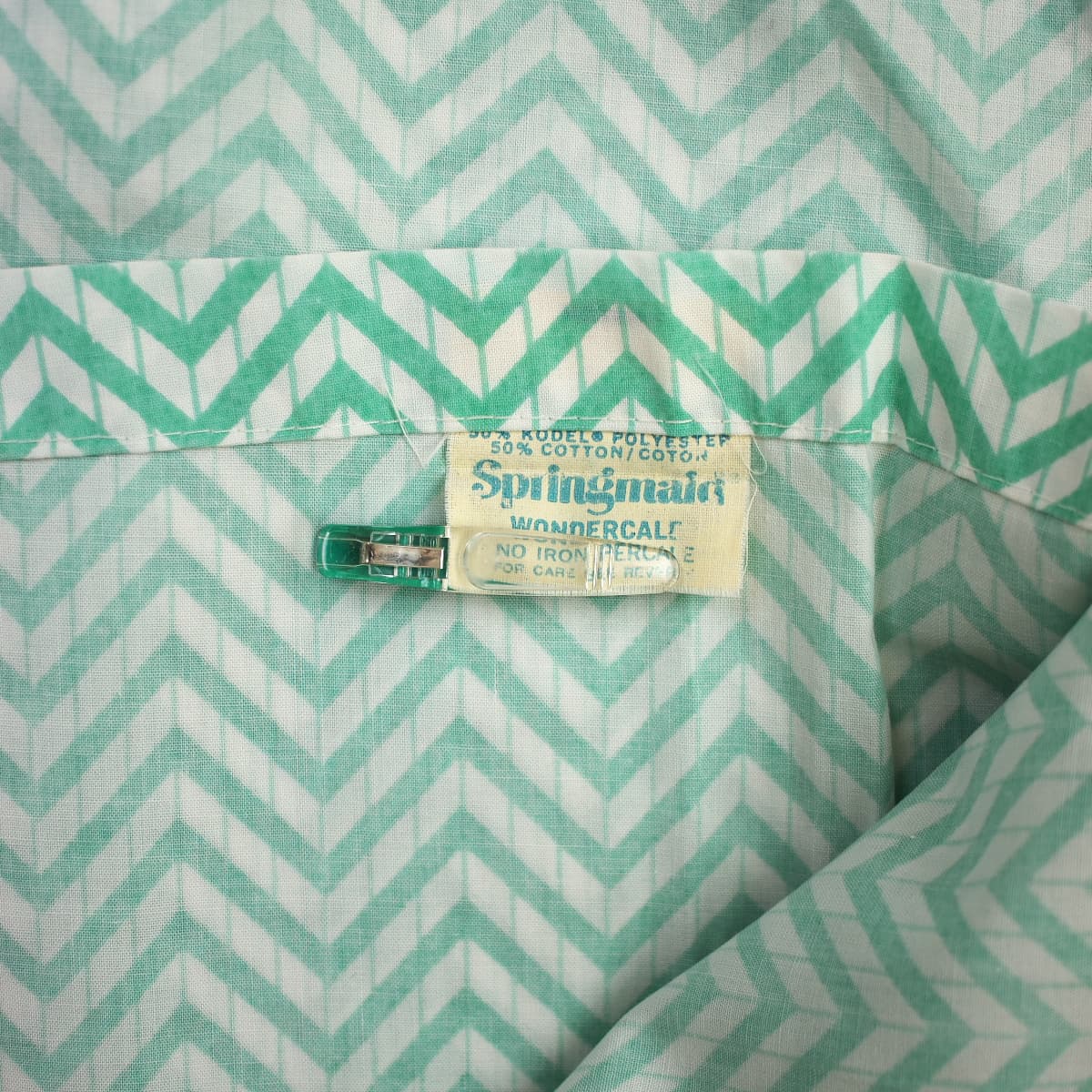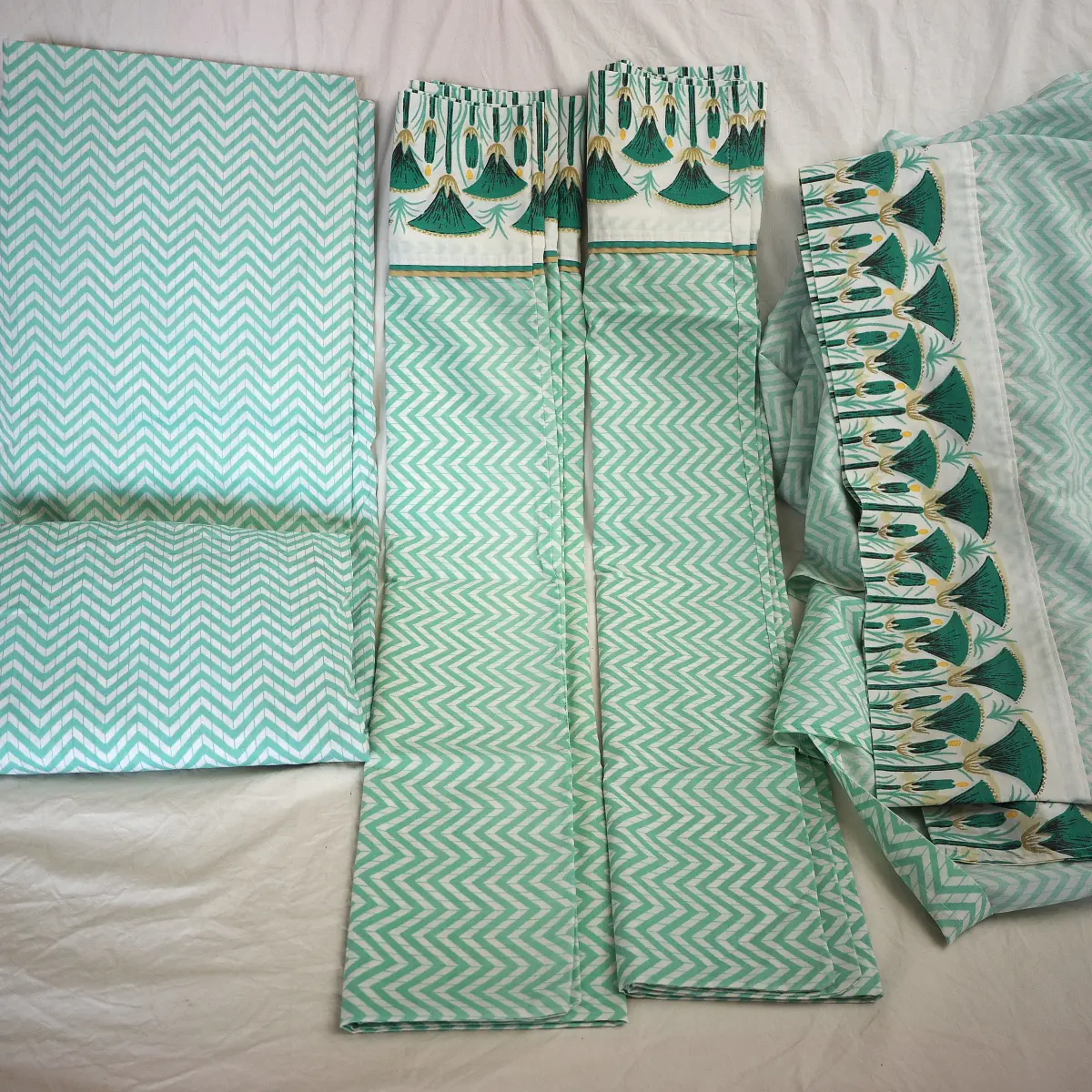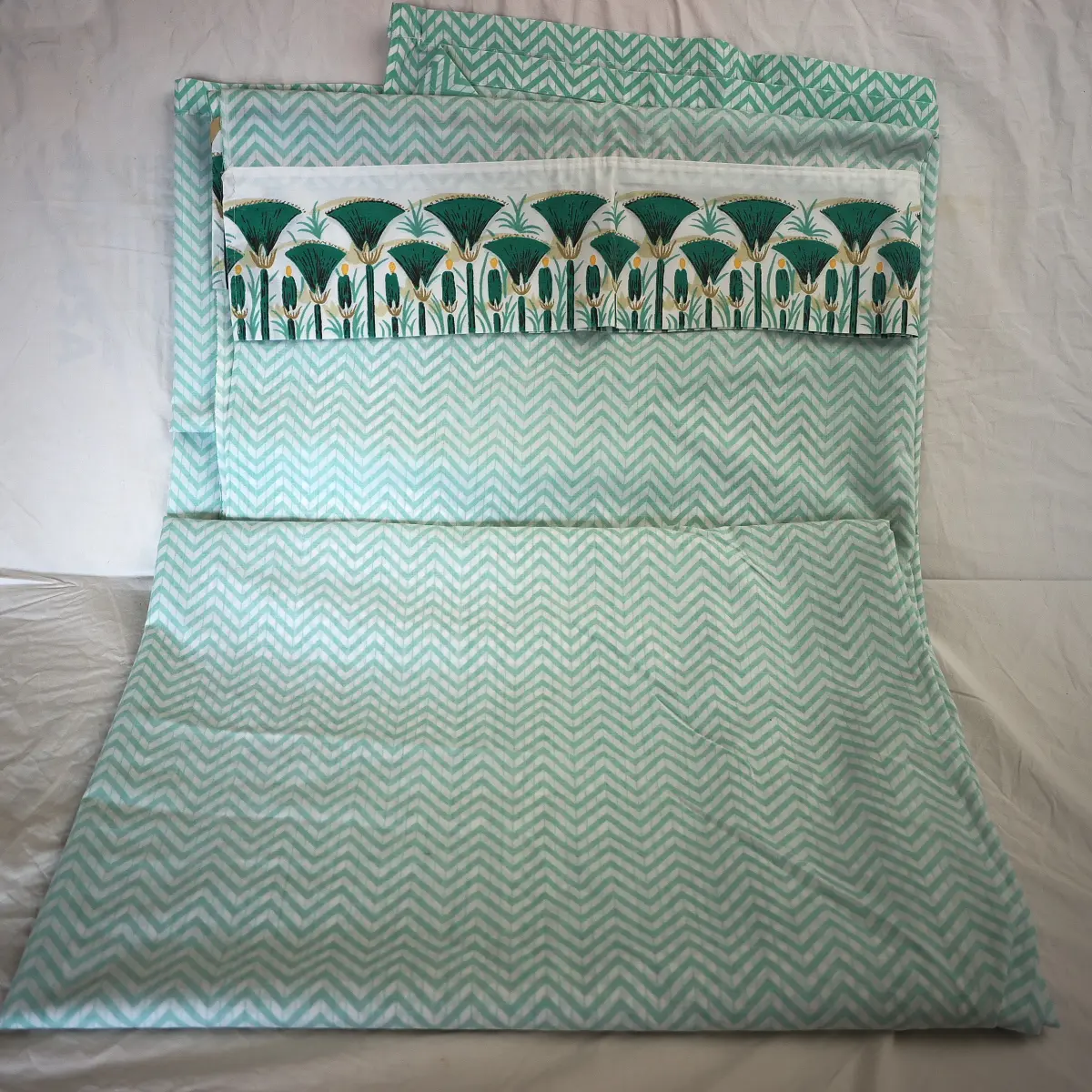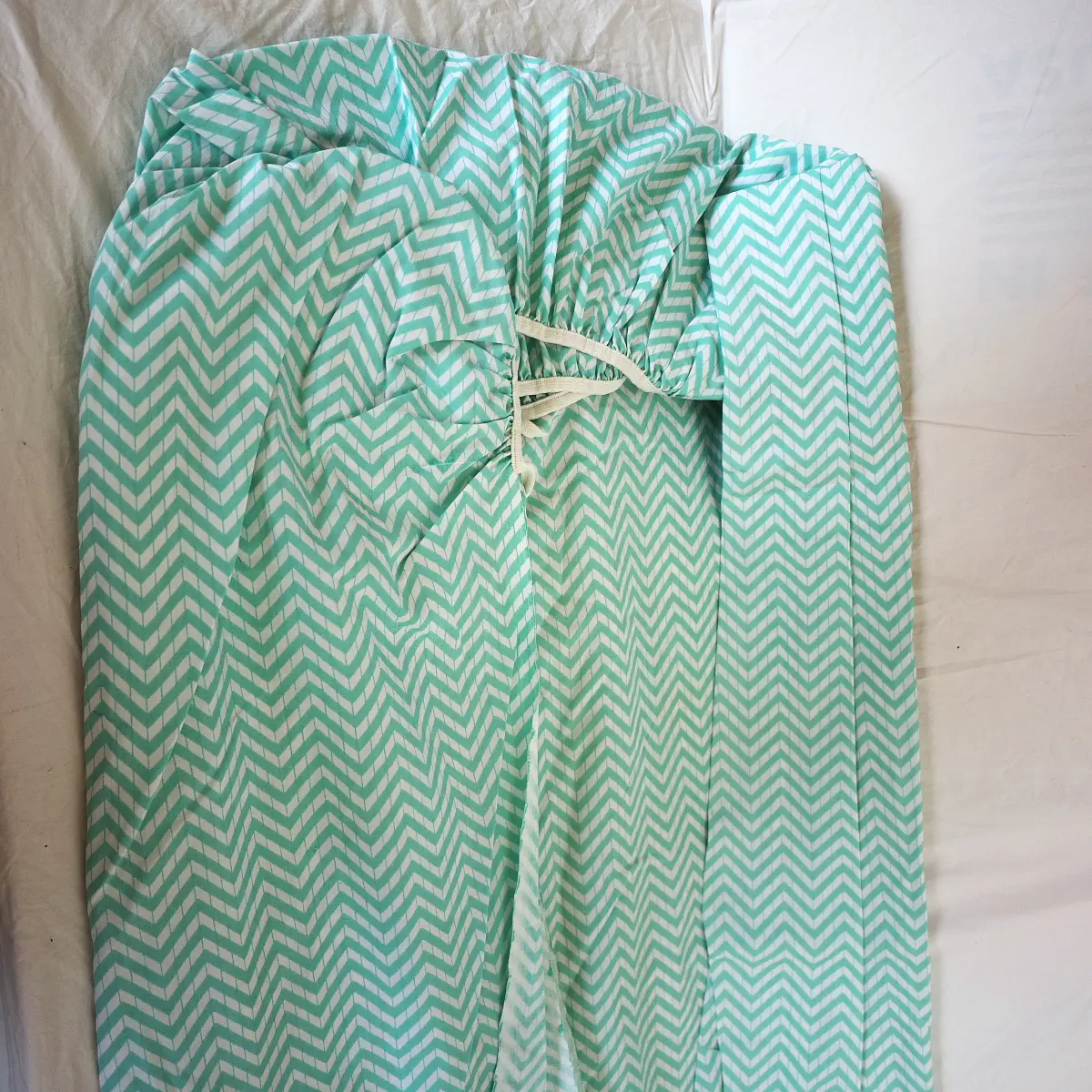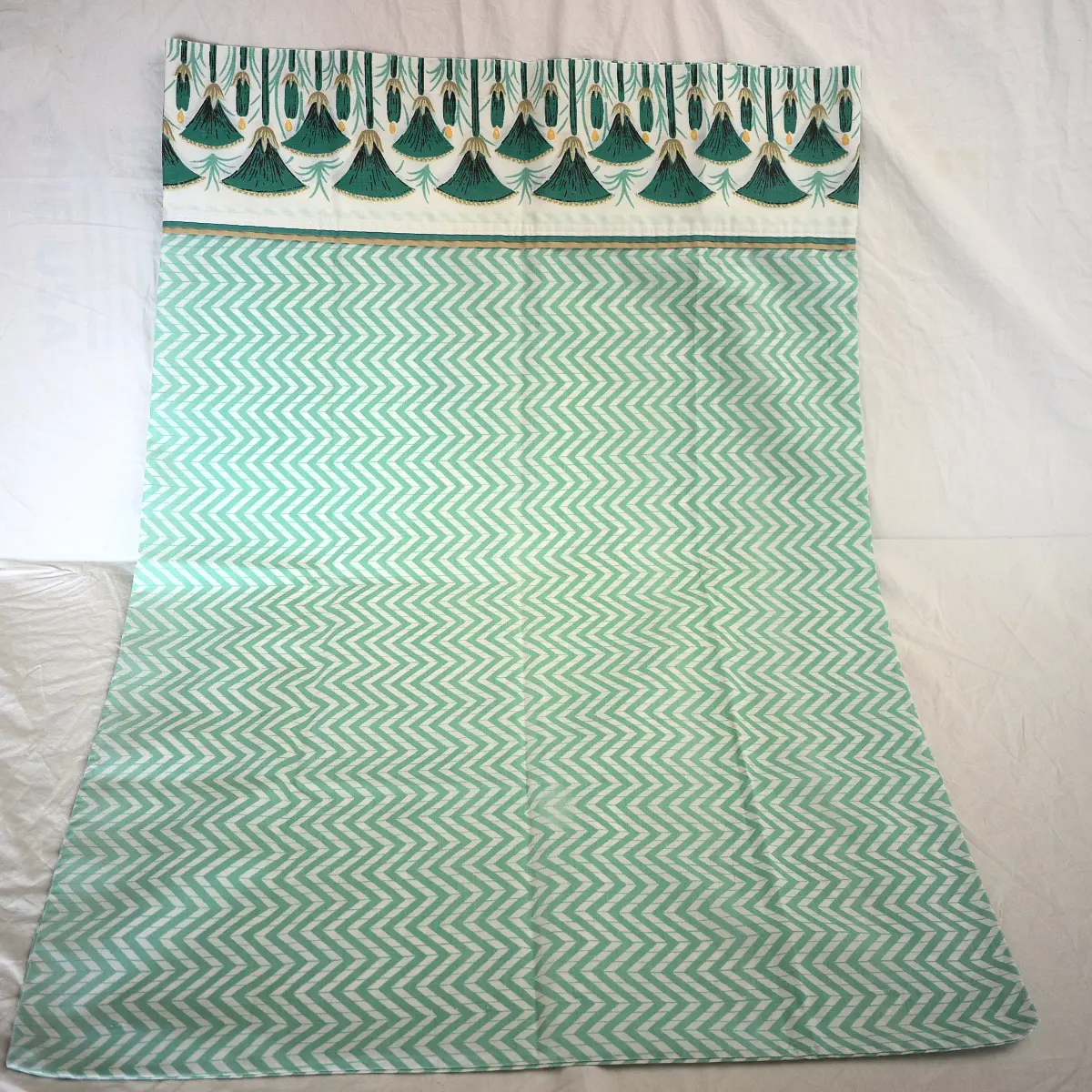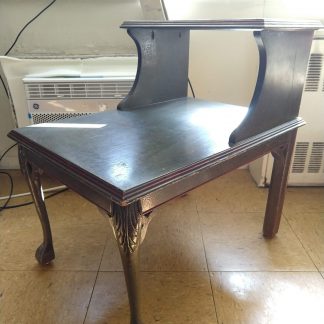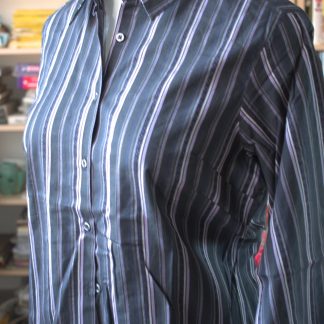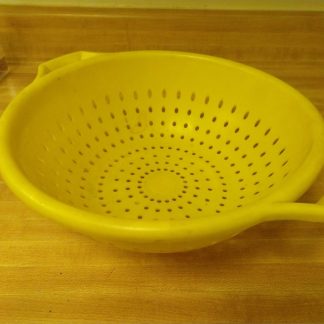Description
Wondercale Sheets are Cotton/poly percale, no‑iron finish. Used Kodel polyester for easy care and crisp feel.
A U.S. queen-size bed sheet typically fits a mattress that measures 150 cm x 200 cm (about 60″ x 79″ inches).
Each sheet set has 2 pillow cases, one flat and one fitted sheet. Total 4 pieces to each set.
Material: Wondercale: 50% Cotton, 50% Kodel Polyester.
Brand: Springmaid Wondercale Sheet Set
Vintage Springmaid Wondercale sheets were typically made from a cotton/polyester percale weave with a thread count in the around 180–200 range.
Here’s why that number matters in context:
- Percale refers to a plain weave with a balanced one‑over, one‑under structure, giving a crisp, cool feel.
- In the mid‑20th century, 180 threads per square inch was considered the industry standard for “luxury” percale — much lower than the 300–800+ counts marketed today, but often more breathable and durable.
- The blend (often 50% Kodel® polyester / 50% cotton) gave them wrinkle resistance and shape retention, so they felt crisp even without ironing.
- Some later Wondercale lines in the late 1970s–1980s were marketed as “200 thread count percale,” but the majority of NOS (new old stock) examples you’ll find today are labeled 180 percale.
🛏 Wondercale Sheets
- Brand & Era: Wondercale was a line of bed linens made by Springmaid, popular from the 1960s through the 1980s.
- Fabric Type: Usually “no‑iron” percale — a tightly woven fabric (often 50/50 cotton–polyester) designed to be smooth, crisp, and wrinkle‑resistant.
- Marketing Hook: Sold as durable, easy‑care sheets that didn’t need ironing after washing — a big selling point in the post‑war “convenience” textile boom.
- Designs: Often came in bright florals, geometric prints, and solid colors, many of which are now considered vintage collectible bedding.
- Collectibility: Today, Wondercale sheets are sought after by vintage linen collectors for their retro patterns, USA‑made quality, and nostalgic appeal.
🧵 Kodel Polyester
- Origin: Kodel® was a trademarked polyester fiber developed in 1958 by Eastman Chemical Products.
- Composition: Early versions (Kodel 200 series) were PCDT polyester — poly‑1,4‑cyclohexylene‑dimethylene terephthalate — known for dimensional stability, wear resistance, and easy dyeing. Later versions (400 series) were PET‑based, similar to Dacron®.
- Uses:
- Blended with cotton for crease‑resistant fabrics in clothing and bedding.
- Used in carpets, upholstery, and fiberfill because it’s resilient and nonallergenic.
- Properties:
- Wrinkle‑resistant, retains shape well.
- Resistant to sunlight and many chemicals.
- Low moisture absorption (about 0.4%).
- Melting point ~290–295 °C.
- Cultural Note: In vintage clothing labels from the ’60s–’80s, “Kodel Polyester” was often called out as a selling point — it was part of the era’s fascination with “miracle fibers”.
🔗 How They Connect
Many Wondercale sheets were made from cotton/Kodel polyester blends, combining the softness and breathability of cotton with the wrinkle‑resistance and durability of Kodel. This made them ideal for the “no‑iron” marketing promise.
Here’s the backstory of Springmaid Wondercale Sheets — which is really the story of the Springmaid brand and its parent company, Springs Cotton Mills / Springs Industries, one of the most influential U.S. textile makers of the 20th century.
🏭 Origins of the Company
- Founded: 1887 in Fort Mill, South Carolina, as Fort Mill Manufacturing Company by Samuel Elliott White and a group of local investors.
- Early Years: Produced cotton cloth on 200 looms, quickly expanding to additional mills in nearby towns.
- Key Figure: Leroy Springs, a merchant and investor (later White’s son‑in‑law), took control in the 1890s, rescuing struggling mills and consolidating them into a growing textile empire.
- Expansion: By the early 1900s, the Lancaster Cotton Mills (part of the Springs group) was one of the largest cotton mills in the world under one roof.
✨ Rise of the Springmaid Brand
- Elliott White Springs (Leroy’s son) took over in 1919 after serving as a WWI aviator.
- In the 1930s–40s, he modernized production and launched Springmaid as a consumer brand for sheets, towels, and fabrics.
- Post‑WWII Boom: Springs Mills pivoted from wartime production (uniforms, tents, gas masks) to colorful, mass‑market home textiles.
- Marketing Edge: Springmaid became famous for bold, sometimes risqué ad campaigns — playful double entendres and pin‑up style imagery that stood out in the conservative textile industry.
🛏 Wondercale Sheets
- Introduced: Mid‑20th century (1960s era) as part of Springmaid’s push into “no‑iron” easy‑care bedding.
- Fabric: Typically a cotton/polyester percale blend — often using Kodel® polyester — for crispness, durability, and wrinkle resistance.
- Selling Point: Marketed as “Wonderfully wrinkle‑free” and long‑lasting, appealing to busy households in the post‑war convenience culture.
- Designs: Offered in bright solids and bold prints, aligning with Springmaid’s reputation for colorful, fashion‑forward linens.
- Distribution: Sold widely in department stores and catalogs across the U.S., becoming a household name in bedding.
🌍 Later Years
- Corporate Evolution: Springs Cotton Mills became Springs Industries in 1966, expanding into multiple home furnishing brands.
- Global Shift: In 2005, Springs merged its home textile operations with Brazil’s Coteminas, forming Springs Global. Much manufacturing moved to South America, but the Springmaid name continued on bedding lines.
- Legacy: Vintage Wondercale sheets are now collectible for their retro patterns, USA‑made quality, and nostalgic branding.
📌 Summary
Springmaid Wondercale Sheets were a product of a textile giant that blended Southern mill heritage, mid‑century synthetic fiber innovation, and cheeky marketing. They represent a moment when American bedding was shifting from all‑cotton to blended fabrics, promising both style and low maintenance.

